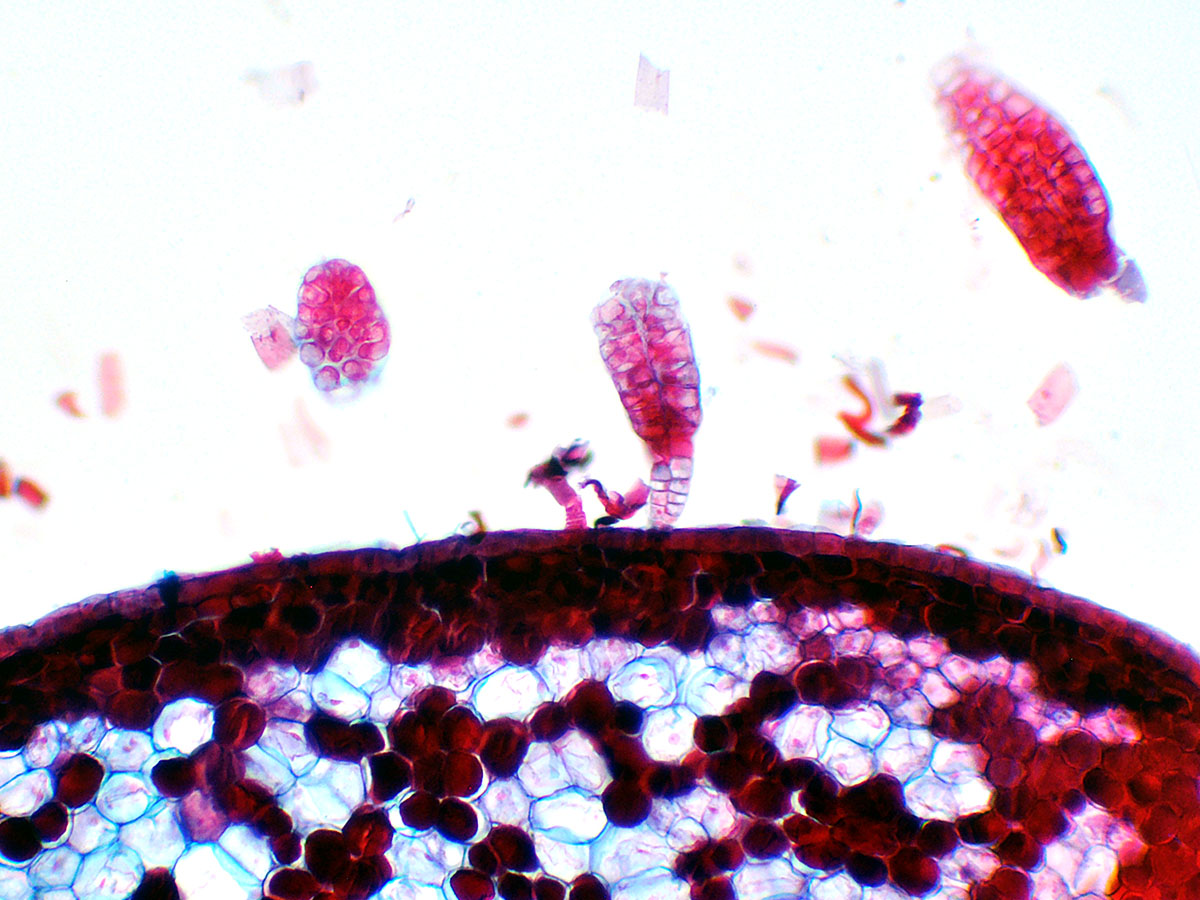- Home
- Search
- Images
- Datasets
- Sample Use
- How to Cite
- Additional Information
- About NEON
- NEON Data Portal
- ASU Biocollections
- About Symbiota
|
Family: Ericaceae |
Subshrubs, shrubs, or trees, (rhizomatous or not). Stems erect (and/or creeping, prostrate in R. groenlandicum, R. lapponicum, R. tomentosum); twigs hairy or glabrous, (older twigs without peglike projections). Leaves persistent or deciduous, alternate; petiole present; blade coriaceous to membranous, (base cuneate, rounded, or obtuse), margins entire, (sometimes ciliate, plane to revolute, abaxial surface 1/3+ visible except sometimes in bud, surfaces hairy and/or scaled, midvein hairy or not, adaxial surface sometimes impressed; venation usually brochidodromous). ( Winter buds usually large, with imbricate scales; floral buds usually larger than vegetative buds.) Inflorescences terminal (axillary in R. albiflorum, short, corymbiform or rounded racemes (fasciculate racemes in R. canadense, R. lapponicum; fasciculate in R. albiflorum), 3-35-flowered (1-2-flowered in R. albiflorum); perulae brownish, scalelike, dry. ( Pedicels horizontal to erect (recurved); bracteoles 2, brownish, scalelike, basal.) Flowers bisexual, weakly bilaterally symmetric (radially symmetric in R. columbianum, R. groenlandicum, R. tomentosum, scented or not); sepals 5[-9], slightly connate; petals 5[-9], strongly to only slightly connate (sometimes nearly distinct), corolla deciduous, rotate to campanulate or funnelform; stamens 5-12[-20], included to long-exserted; (filaments usually unequal, usually unicellular-hairy, glabrous in R. vaseyi, glabrous or proximally unicellular-hairy in R. groenlandicum, R. lapponicum); anthers without awns, dehiscent by terminal pores; ovary 5[-18]-locular; style inserted in slight depression at ovary apex or smoothly intergrading, (usually curved, long, slender); stigma capitate. Fruits capsular, elongate, usually ovoid to cylindric, dehiscence usually basipetally septicidal (acropetally septicidal in R. columbianum, R. groenlandicum, R. tomentosum). Seeds (10-)100+, flattened-ellipsoidal to fusiform, often tailed, ± winged; testa smooth. x = 13. R. Good (1974) provided an excellent discussion of the phytogeography of Rhododendron, which occurs in arctic to tropical montane regions of North America, Europe, and Asia, extending southward to northeastern Australia. Its main centers of diversity are in the mountains of southern China and bordering countries, with a secondary center in New Guinea; eastern North America is a third center of diversity. The species of Rhododendron are divided into subgenera (see references and discussion under various representative species). The subgenera are occasionally segregated; see, for example, H. F. Copeland (1943). The name Azalea Linnaeus often has been used for species with deciduous leaves; such use is misapplied. Therorhodion has usually been included within Rhododendron, and these species are then placed in subg. Therorhodion (Maximowicz) A. Gray (W. R. Philipson and M. N. Philipson 1986). Here, Therorhodion is recognized as a genus distinct from Rhododendron (see K. A. Kron and W. S. Judd 1990; Kron 1997; Kron et al. 2002) because of its foliaceous perulae and base chromosome number of 12. Therorhodion probably is sister to the remaining genera of Rhodoreae (most of which belong within Rhododendron). Rhododendron is closely related to Menziesia, and the recognition of the latter may render Rhododendron paraphyletic (Kron 1997). Numerous non-native species are grown for their beautiful flowers, and some of these, e.g., Rhododendron molle (Blume) G. Don, R. luteum Sweet, R. simsii Planchon, and R. obtusum (Lindley) Planchon, sometimes persist after cultivation. Probably, all species are poisonous due to the presence of andromedotoxin, a resinoid (M. D. McGee 1973).
Cal 5-lobed, much shorter than the cor; cor campanulate to funnelform, conspicuous, regularly or commonly irregularly 5-lobed; stamens mostly 5 or 10, with elongate filaments and short anthers with 2 terminal pores; ovary superior, 5-locular; style elongate; capsule septicidal; shrubs or trees with alternate, deciduous or evergreen lvs and showy fls in terminal racemes or umbel-like clusters from scaly buds. Our spp. 2n=26, except as noted. (Azalea) 850, mainly N. Hemisphere. Gleason, Henry A. & Cronquist, Arthur J. 1991. Manual of vascular plants of northeastern United States and adjacent Canada. lxxv + 910 pp. ©The New York Botanical Garden. All rights reserved. Used by permission. |


